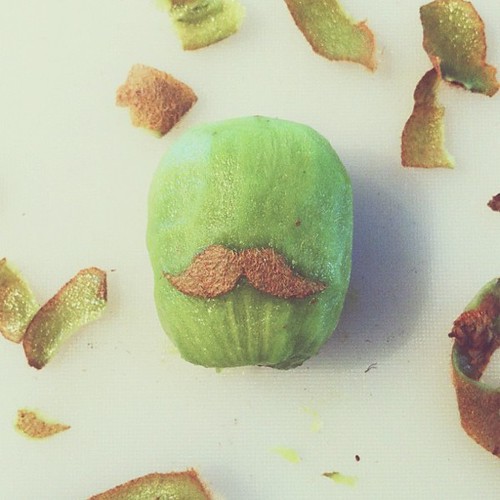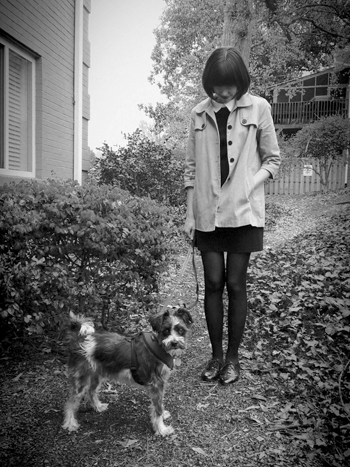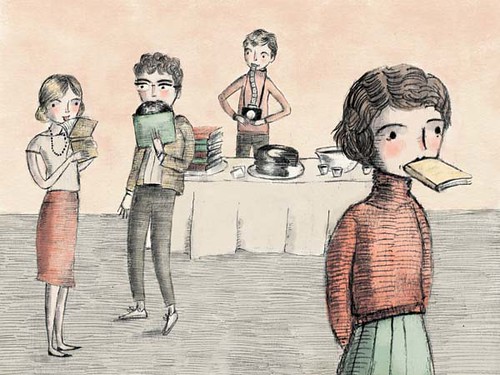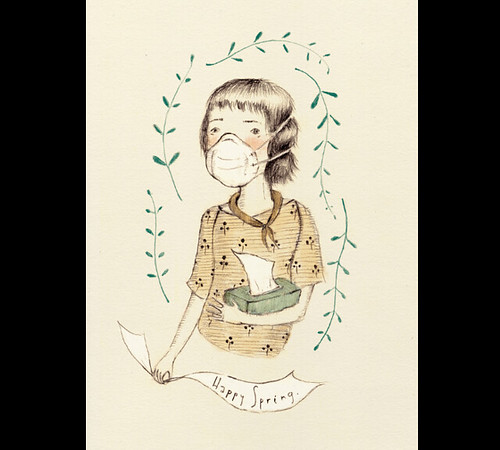Brock Davis is an award-winning and internationally acclaimed designer, creative director, and artist. He is known for his clever advertising campaigns, Threadless T-shirt designs, banana peel trucker hats, and projects such as Make Something Cool Everyday and his iPhone photo series. His work showcases his incredible talent for creating hilarious, beautiful, and unexpected images out of what is most familiar to us. We are honored to exhibit a selection of his 2012 iPhone Photos in our current show, SMART.

Where are you from, and where do you currently live?
I grew up in Marietta, Georgia. I moved to Minneapolis in 1995, and I currently I live in Saint Louis Park.
How would you describe yourself? (or how might someone else describe you?)
Curious, focused, spontaneous. I used to be more intense, especially when working, but over the years I've become much more relaxed. I'm an introvert. I think that would surprise people who know me. I feel more comfortable creatively when I am working by myself.
How would you describe your work?
Spontaneous and simple.
 |
| Clean Shaven |
Tell is about your work life. What are the best/most challenging aspects of your job?
Currently, I work as a freelance creative director and art director. I worked at Carmichael Lynch for about 9 years before deciding to work independently. Creative Directing is fun and challenging. It's a good opportunity to motivate and inspire up-and-coming creatives. I'm pretty hands-off, and I like to give creatives as much freedom as possible to make the work their own. As far as challenges go, there is a lot of fear in advertising when it comes to ideas. Ideas get killed all the time. As an art director, you learn how to go back and try again without being discouraged. As a Creative Director, you learn how to motivate your creative team to do the same. Selling ideas can be harder than conceiving them. When you have an idea, you have to believe in it and present it with unwavering confidence.
Can you tell us about one of your most successful campaigns?
One of my more successful campaigns was the 'Messin' With Sasquatch' campaign for Jack Link's Beef Jerky. When we first presented the idea internally, people were afraid even though it was apparent that it could be great. It took some pushing just to get the idea in front of the client, and once the client saw the idea, they were afraid as well. Thankfully, risks were taken, and it ended up being very successful (and still is today). Whenever I see a great advertising or design idea, I'm often more impressed with the agency's ability to have pushed that idea through, since it probably had to survive layers and layers of fear and doubt. That's more impressive than the concept.
 |
| Build |
What other jobs have you held? What was the best? The worst?
I grew up doing a lot of things that kids do to make money. Lemonade stands, cutting grass, shoveling snow. My mother would sell art at craft shows. Sometimes I would go with her and draw caricatures of people. My favorite job was working as a sign maker at Publix, a grocery store chain in Atlanta. My least favorite was working as a busboy at Old Country Buffet.
What are your ideal working conditions?
I love my home studio. It isn't much, but it's comfortable. When I'm thinking, I like to have a changing view. Looking out a window, watching things change and move relaxes my brain and is good for generating ideas. I also tend to do a lot of conceptual thinking while doing mundane tasks like cutting the grass or washing dishes. Some of my best ideas often hit during these moments.
 |
| At Ease, Soldiers |
Where do you turn for inspiration?
Over the last few years, I've drawn most of my inspiration from ordinary things that people don't think too much about, like a door knob, or a toothbrush -everyday objects that have become ordinary and uninteresting. I like the challenge of trying to make them interesting again. I think every object has creative potential. It's just a matter of finding it.
Recently, I've been interested in using social apps as creative outlets. I particularly love Instagram and Vine. Both are incredibly simple to use and come with some wonderful constraints. Parameters and limitations can be great for creativity.
Is there a work you’ve made that you’re particularly proud of?
I tend to be drawn to the pieces that are the most simple. Sometimes these pieces can be created within a few minutes, from concept to execution. One of my favorite recent pieces is a little film I made on Vine. I was slicing an onion and was curious to see if I could arrange the onion rings, so as to resemble raindrops as they hit a puddle, rippling upon impact. I spent a few minutes filming this with my phone, and I was pleasantly surprised by the results.
What’s the most interesting feedback you’ve ever gotten about your work?
A creative director once told me that my portfolio looked like it was made by multiple designers. Looking back, I was adjusting my art direction with each piece so that every idea would fully resonate; I just didn't realize I was doing this at the time. This feedback helped me understand how execution and ideas relate. I try to let the idea drive the execution. One method of execution doesn't work for every idea. Some ideas resonate better through illustration, others through photography or another medium. I've never been hindered by whether or not an idea requires me to work in a medium I'm not as familiar with. For example, if an idea requires that I learn how to sculpt, then I learn how to sculpt.
 |
| Cauliflower Space Shuttle, 1986 |
You're married. Can you tell us about your wife? Is she an artist as well?
Alyn is awesome. We met many years ago while playing ultimate frisbee at Kenwood Park. She's from Grand Rapids, MN. I grew up in a small town in North Georgia, so we both have small town sensibilities. Most of her creativity comes out through cooking, and she is a great writer as well. She helps me out on projects all the time. I'm always texting her, asking her to pick up various odd things for me.
I'm inspired by my kids. Everything is new and spontaneous and interesting to them. There are no rules to their creativity; they just create. I apply this approach when working on my own projects. It's inspiring to watch my kids use their imaginations. Lately, my son Ames has been into severe weather, specifically tornadoes and thunderstorms. He makes radar weather patterns with play-doh. He flattens various pieces down on paper and waits for them to dry. Then he peels them off and arranges them in weather patterns. My daughter June does a lot of drawing. She creates her own made-up letters and weaves them in her pictures.
How do you spend your time when you’re not making art?
I love being outside with my kids and hanging out with my family around the house. We ride bikes, play sports and games. I help my son catch dragonflies and butterflies. We play music and watch a good share of tv. Recently, I've been into watching documentaries on Netflix. They don't have a great movie selection, but the documentaries are awesome.
Can you share with us a future goal of yours, professional or otherwise? Also, what would be your ideal collaboration/commission?
I just want to always be able to make something interesting. It doesn't matter if it's professional or personal. I look forward to doing more collaborations with my kids.
Are there any artists you think Light Grey and its blog readers should check out?
Rich Barlow, Stephen Shaskan, Justin Newhall
What’s the best advice on being an artist you’ve been given?
Ever since I was a kid, my mom always told me to have fun when making art. I still do that today, and I think it resonates in the work.
Check out Brock's work at: www.itistheworldthatmadeyousmall.com
Find Brock's prints in our online shop here







